Tucked away in the heart of Central Asia, Kyrgyzstan is a land of soaring peaks, glacial lakes, and sweeping valleys. With over 90% of its territory covered by mountains, this is a paradise for trekkers seeking off-the-beaten-path adventures. From alpine meadows to rugged passes, Kyrgyzstan offers a stunning variety of landscapes—and remarkably few crowds.
Through my work as an overland tour leader, I’ve been lucky enough to visit Kyrgyzstan several times and enjoy multiple hikes with every visit. Here’s a detailed guide to the best hikes in Kyrgyzstan, with tips on routes, difficulty, access, and what makes each trek special.
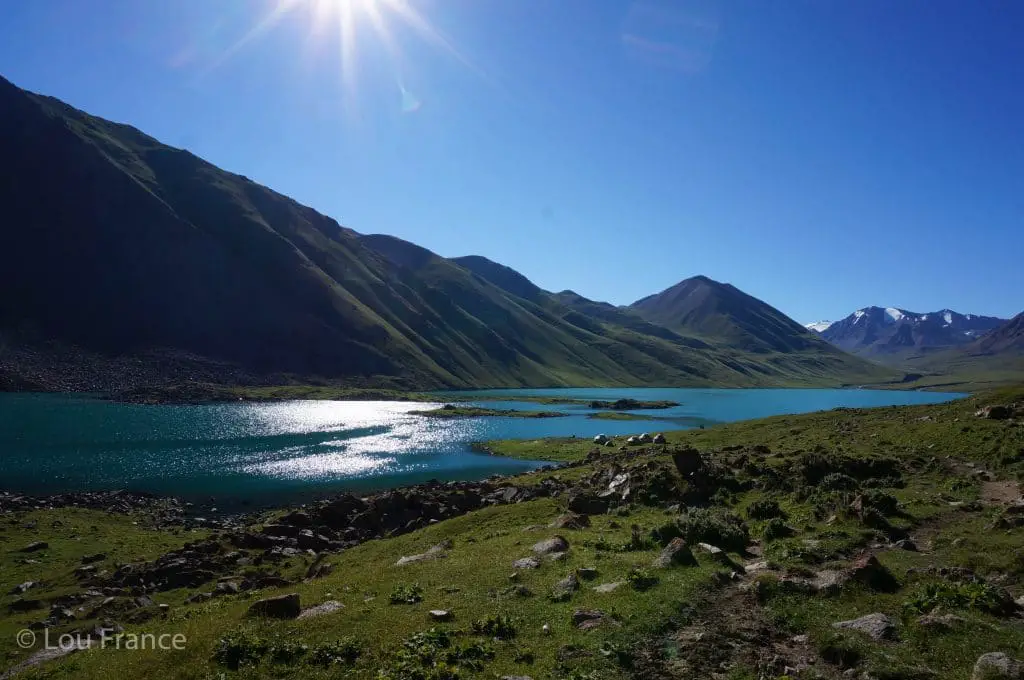
Disclaimer: Some links in this article are affiliate links, which means that if you purchase through them I receive a small commission, at no extra cost or price difference to you. This helps cover the cost of running this blog and keeps all resources free to access 🙂
THE BEST HIKES IN KYRGYZSTAN
1. Ala-Kul Lake & Altyn Arashan Trek (Karakol)
- Duration: 3–5 days
- Distance: ~35–45 km
- Highest Point: Ala-Kul Pass (3,860 m)
- Difficulty: Moderate to challenging
- Highlights: Electric-blue alpine lake, panoramic pass, hot springs
- Best Time: Mid-June to mid-September
Why Go: The Ala-Kul Lake Trek is perhaps the most iconic in Kyrgyzstan. Starting from Karakol, this trail takes you through verdant alpine valleys, past nomadic yurts, and up to the jewel-toned Ala-Kul Lake sitting at 3,560 meters.
The high point is crossing the Ala-Kul Pass (3,860 m), offering panoramic views of the surrounding peaks. This is one of all-time favourite views – just amazing!
Top Tip: Altyn Arashan, with its natural hot springs, offers a great place to stop and soak those aching muscles.
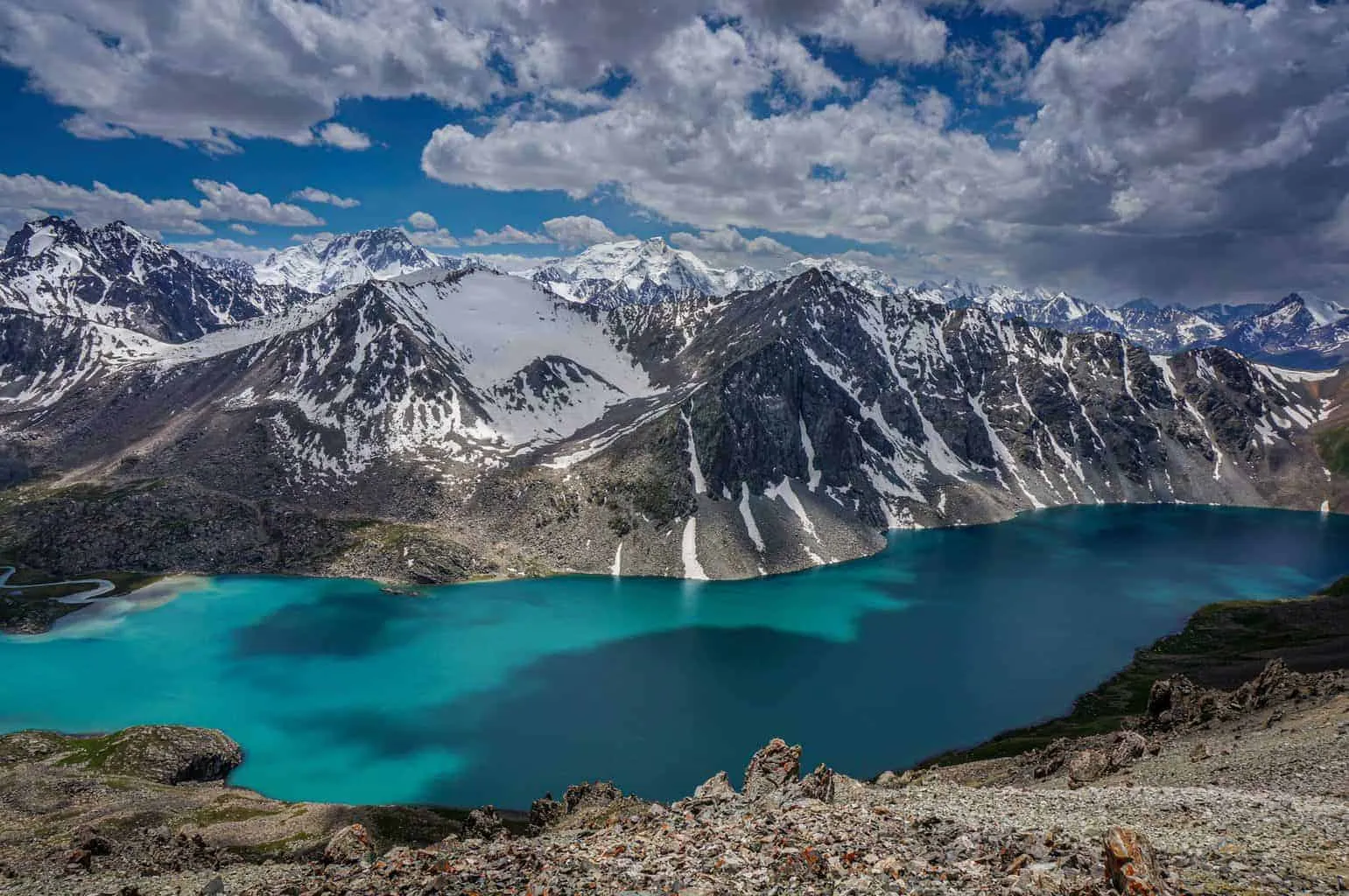
Route Summary
Day 1: Karakol – Sirota Camp (~2,800 m)
- Hike through Karakol Valley and pine forests
- Overnight near wooden shelter or tents
Day 2: Sirota Camp – Ala-Kul Lake – Ala-Kul Pass (~3,860 m) – Keldike Valley
- Steep ascent to Ala-Kul Lake, then up to the pass
- Epic panoramic views from the top
- Descent to Keldike Valley for camping
Day 3: Keldike – Altyn Arashan (~2,400 m)
- Relaxing descent to the hot springs of Altyn Arashan
- Optional overnight in yurt or guesthouse
Day 4 (optional): Altyn Arashan – Karakol
- Easy downhill walk or 4WD jeep pickup
Logistics
- Permits: Not required
- Accommodation: Tents, basic shelters, yurts, or guesthouses
- Water: Available from rivers, but purification is advised
- Best for: Hikers who want a mix of scenery, challenge, and relaxation
2. Lenin Peak Base Camp Trek (South Pamirs)
- Duration: 2–4 days
- Distance: ~30 km round trip
- Highest Point: ~4,400 m (Base Camp or higher to Advanced Camp)
- Difficulty: Moderate (altitude)
- Highlights: Snowy peaks, yurt camps, glacier views
- Best Time: July to August
Why Go: For a taste of the Pamir Mountains, the trek to Lenin Peak Base Camp (3,600 m) is breathtaking. While summiting the 7,134-meter giant is for mountaineers, hiking to its base is achievable for fit trekkers. The scenery is stark, vast, and unforgettable.
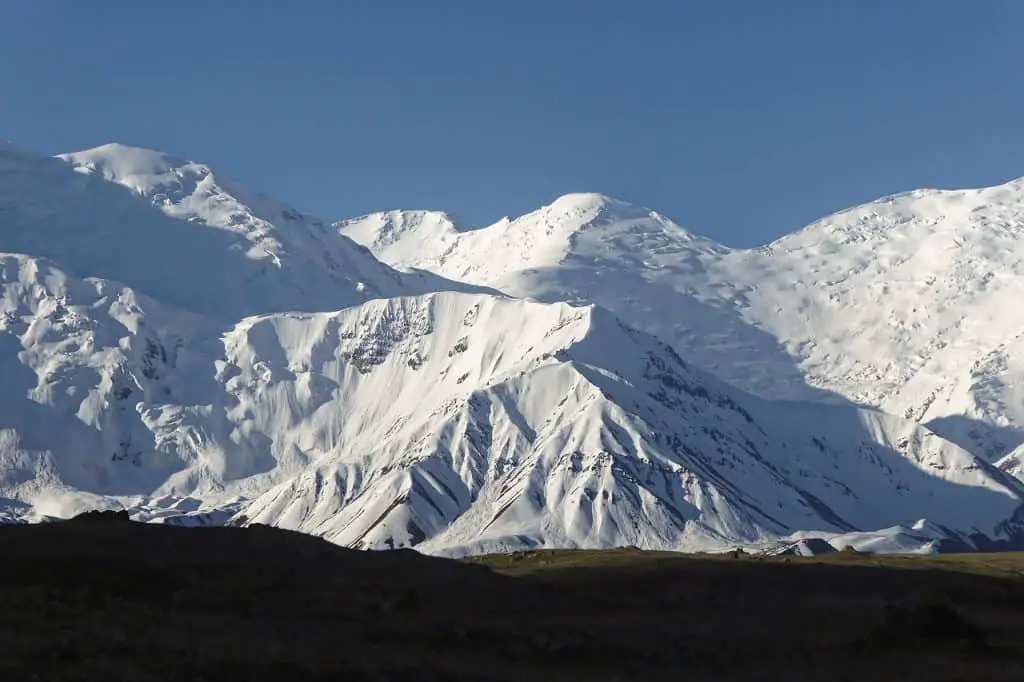
Route Summary
Day 1: Osh – Tulpar Kol Lake (~3,000 m)
- 6-7 hour drive from Osh to yurt camp at the lake
Day 2: Tulpar Kol – Base Camp (~3,600 m)
- Easy acclimatization hike
- Stay in yurts or tents at base camp
Day 3 (optional): Hike to Camp 2 (~4,400 m)
- Steep ascent, not technical but strenuous
- Offers amazing views of glaciers and Lenin Peak
Day 4: Return to Tulpar Kol
Day 5: Drive back to Osh
Logistics
- Permits: Border permit needed (must be arranged in advance)
- Accommodation: Yurts or tents at base camp
- Best for: Those who want a dramatic mountain experience without climbing
3. Jyrgalan to Boz-Uchuk Lakes Trek (Jyrgalan Valley)
- Duration: 3–4 days
- Distance: ~55 km
- Highest Point: 3,400 m
- Difficulty: Moderate
- Highlights: Remote alpine lakes, wild meadows, herder encounters
- Best Time: June to September
Why Go: Jyrgalan is one of Kyrgyzstan’s emerging trekking hubs, offering less crowded trails and authentic community-based tourism. This loop includes several pristine alpine lakes with very few other trekkers.
Route Summary
Day 1: Jyrgalan – Terim Tor Valley (~2,700 m)
- Gentle ascent through meadows and forested valleys
- Overnight in tent or shepherd’s yurt
Day 2: Terim Tor – Boz Uchuk Lakes (~3,400 m)
- Climb up to a chain of alpine lakes
- Cross a moderate pass (~3,350 m)
Day 3: Descent to Jyrgalan
- Long but scenic walk down via open pastures
Logistics
- Accommodation: Homestays, yurts, or tents
- Food: Homestay packages often include packed meals
- Highlights: Horse trekking also available, plus cultural immersion with Kyrgyz families
4. Tulpar-Kol to Sary-Mogol Pass (Alay Mountains)
- Duration: 3–5 days
- Distance: ~40–50 km
- Highest Point: Sary-Mogol Pass (4,300 m)
- Difficulty: Challenging (high altitude, remote)
- Highlights: Red rock canyons, sweeping Pamir views, yurt stays
- Best Time: July to September
Why Go: This off-the-beaten-path trek offers raw wilderness and solitude. Combine it with the Lenin Base Camp trek for a longer adventure.
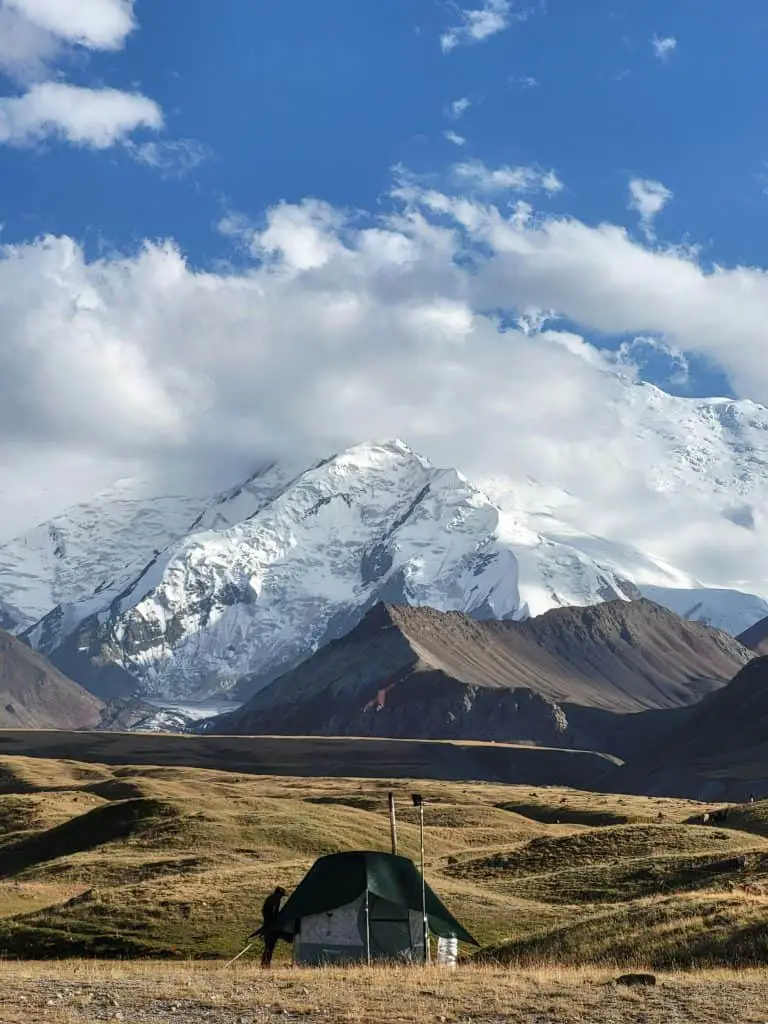
Route Summary
Day 1: Sary‑Mogol → Tulpar‑Kol Lake
- Drive or hike from Sary‑Mogol up Tuyuk Gorge to Tulpar‑Kol (3,500 m)
- Scenic lakeside yurt camp near Lenin Peak Base Camp
Day 2: Tulpar‑Kol → Travellers’ Pass (4,100–4,140 m) → Return
- Early hike to Traveler’s Pass for panoramic views of Lenin Peak (7,134 m)
- Return to Tulpar‑Kol camp for the night
Day 3: Tulpar‑Kol → Sary‑Mogol Village
- Descend along the valley road; gentle walk with nomadic scenery
- Optional taxi or walk to village
Day 4: Sary‑Mogol → Sary‑Mogol Pass (4,303 m) → Yurt Camp (~3,300 m)
- Ascend steep scree trail to high pass, then descend into valley
- Overnight in a yurt near base of pass
Day 5: Yurt Camp → Sary‑Mogol → Return to Osh
- Easy walk down to Sary‑Mogol village, through shepherd camps
- Drive back to Osh
Logistics:
- Access: Shared taxis or minibuses from Osh to Sary‑Mogol (3–4 hrs); yurt camps accessible by foot, horseback, or jeep
- Accommodation: Yurt camps at Tulpar‑Kol, high‑altitude pass camps, plus homestays in Sary‑Mogol
- Seasonality: Passes open approximately late June–mid‑September
- Water & Supplies: Bring a filter; yurt camps offer meals
- Navigation: Trail is well-trodden but hiring a guide adds safety and local knowledge
5. Song-Kol Lake Trek (Naryn Region)
- Duration: 3–4 days
- Distance: ~60 km
- Highest Point: Kalmak Ashuu Pass (~3,450 m)
- Difficulty: Moderate (due to distance and altitude)
- Highlights: Rolling green jailoos (pastures), yurt camps, lake views
- Best Time: Mid-June to September
Why Go: A classic trek into nomadic highlands, the Song‑Kol route explores rolling jailoos (summer pastures), pastoral yurt camps, and dramatic mountain passes. The centerpiece is the stunning alpine lake at 3,016 m, ringed by shepherd life and wild tranquility. It’s ideal for hikers and horse-trekkers seeking cultural immersion with some altitude challenge.
Top tip: Stay with semi-nomadic herders and ride or hike across sweeping meadows at this high-altitude lake.
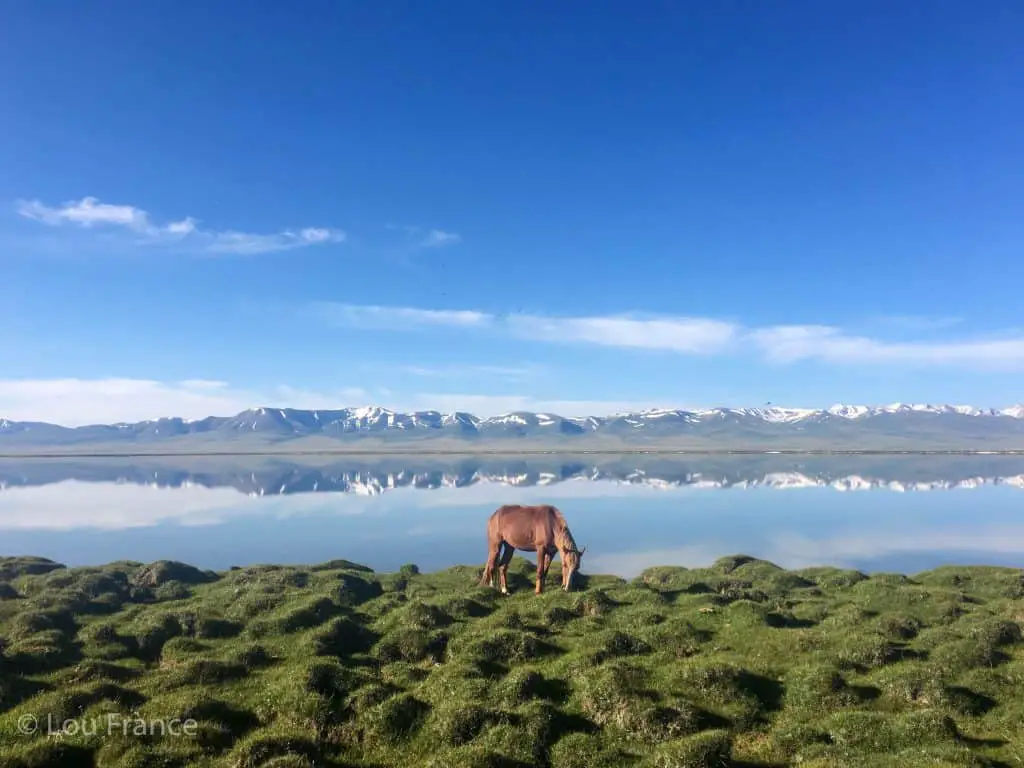
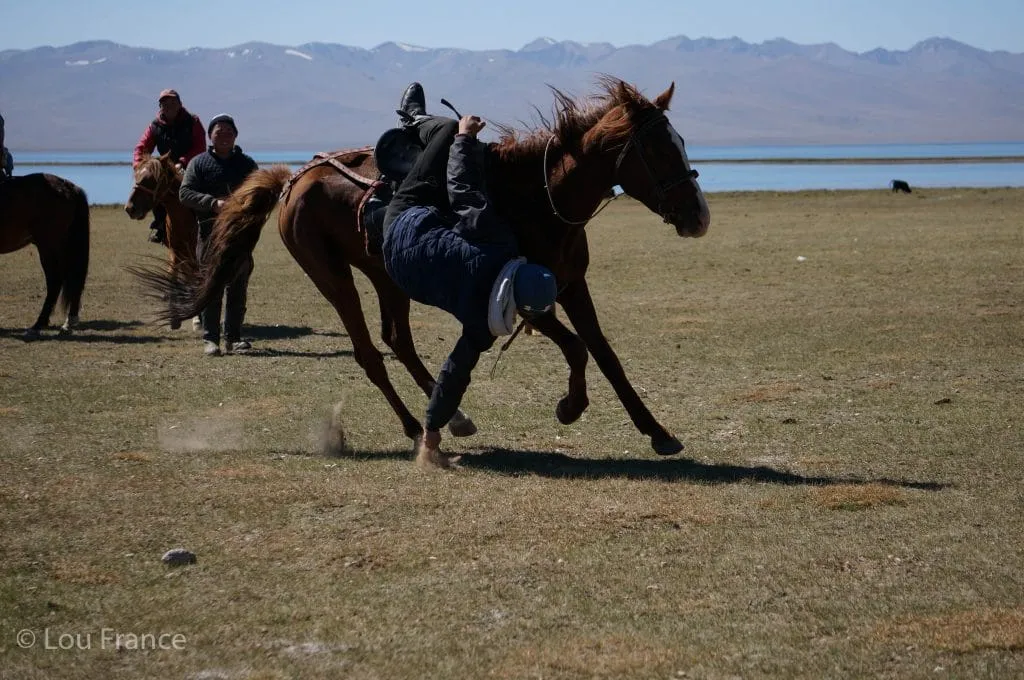
Route Summary:
Day 1: Kyzart Pass → Kilemche Jailoo
- Start at Kyzart Pass (2,664 m), traverse through forested slopes past Chaar Archa Pass (~3,061 m)
- Descend into Kilemche pastures; overnight in yurt camp
Day 2: Kilemche Jailoo → Zhalguz Karagai Pass → Song‑Kol Lake
- Climb to Zhalguz Karagai Pass (~3,325 m) with panoramic views
- Descend into the basin, passing through yurt camps to reach Song‑Kol (3,016 m)
- Camp lakeside in yurts, experiencing nomadic hospitality
Day 3: Exploration Day at Song‑Kol
- Gentle hikes along the shore or horseback rides on the jailoos
- Visit local shepherd families, enjoy kumis, relax, and stargaze in pristine high-mountain silence
Day 4: Return to Kyzart / Kochkor
- Option A: Hike back over pass to Kyzart Village (~1–2 days via Chaar Archa or Jalgyz-Karagai Passes)
- Option B: Arrange transport (4WD or shared taxi) back to Kochkor or Bishkek
- Water, yurt camp options, and horses available along route
Logistics
- Accommodation: Community-based yurt camps
- Transport: Shared jeep or 4WD from Kochkor (< $20); hiking access via Kyzart
- Navigation & gear: GPS/guides recommended; water filtration required; night temps often below freezing
- Best Season: June–September, when yurt camps operate and passes are clear
6. Kol-Ukok Lake Trek (Kochkor)
- Duration: 2–3 days
- Distance: ~35 km
- Highest Point: ~3,200 m
- Difficulty: Moderate
- Highlights: Peaceful alpine lake, glacial cirques, yurt stay
- Best Time: June to September
Why Go: Less known than Ala-Kul but equally beautiful, Kol-Ukok Lake is a tranquil alpine lake surrounded by snowcapped peaks. Starting from Kochkor, this is a great shorter trek for travellers who want a dose of adventure without intense altitude gains.
You can book your yurt camp in advance or take the risk of just turning up and hoping there’ll be space, which is what we did on our visit.
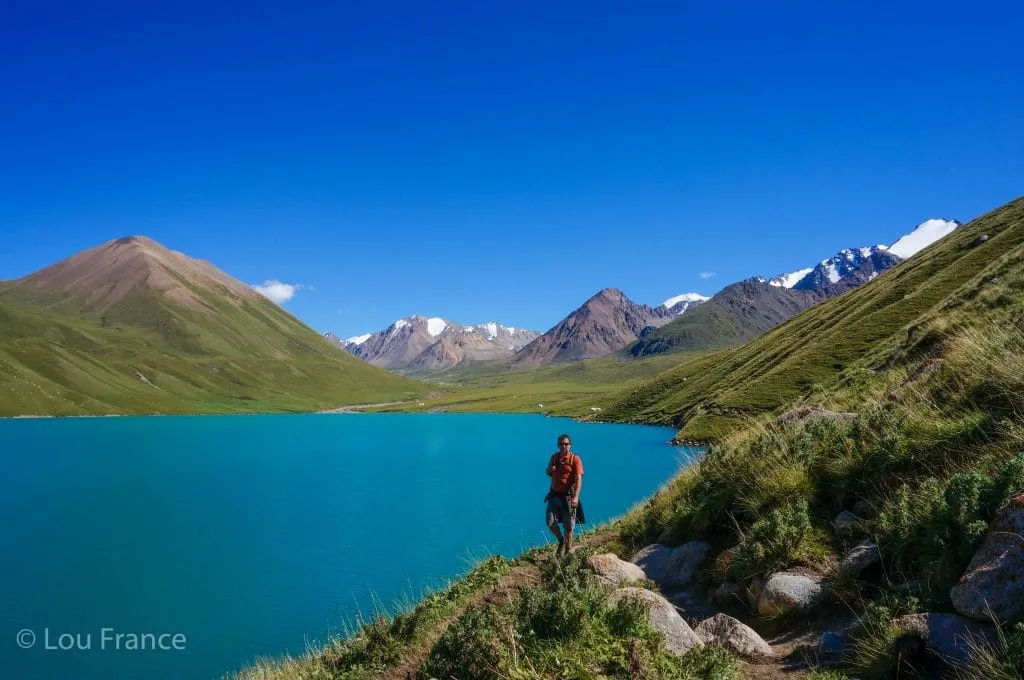
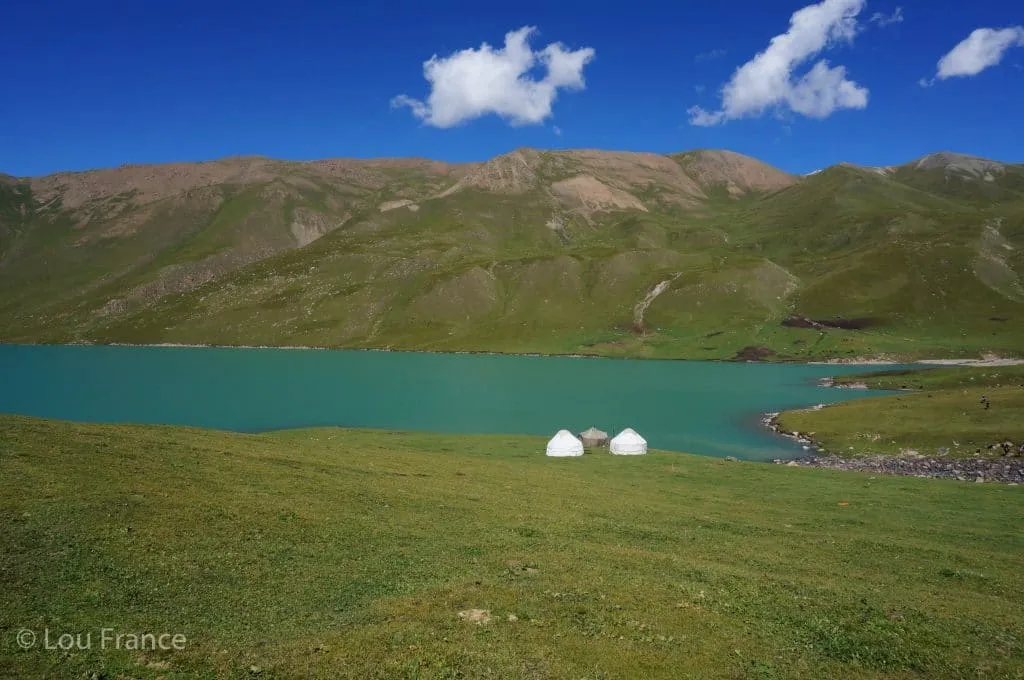
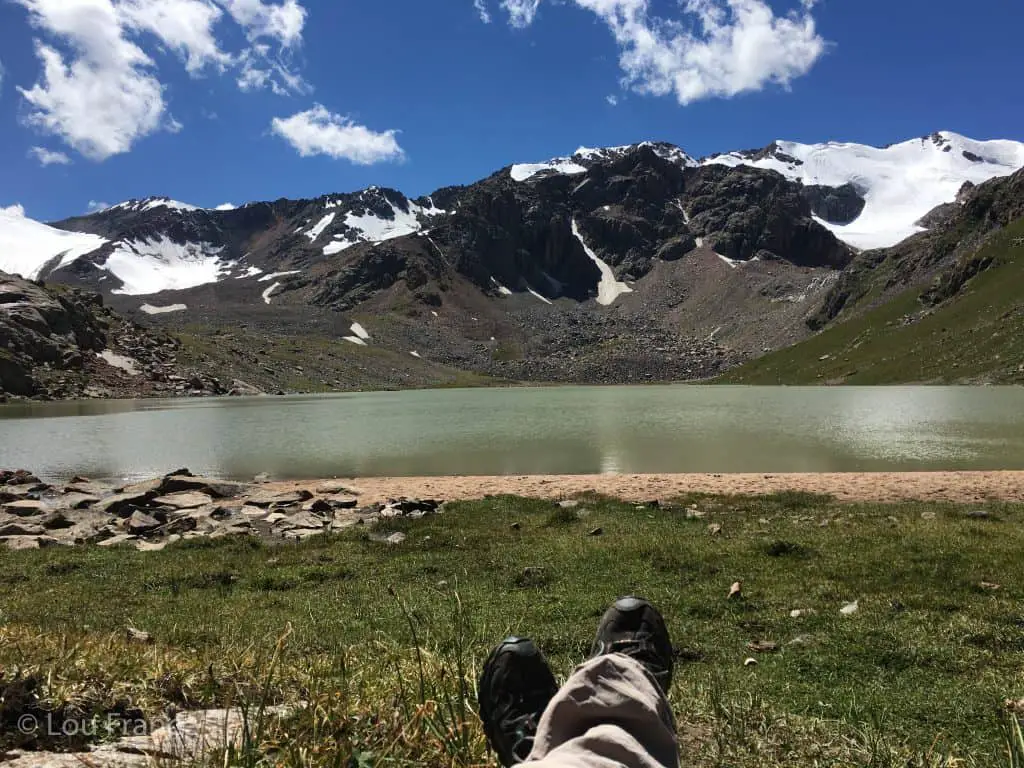
Route Summary
Day 1: Kochkor – Kol-Ukok Valley (~2,800 m)
- Start from Isakeev village (taxi or hitch)
- Gentle ascent to yurt camp in the valley
Day 2: Kol-Ukok Lake (~3,050 m)
- Short but steep climb to the lake
- Optional hike to Kol-Tor Lake (~3,500 m)
Day 3: Return to Kochkor
Logistics
- Accommodation: Yurt camps, with meals available
- Horse option: Many travelers do this trek on horseback
- Best for: First-time trekkers and those short on time
7. Terskey Alatau Traverse (Karakol to Jeti-Ögüz)
- Duration: 7–10 days
- Distance: ~100+ km
- Highest Point: Telety Pass 3,800m
- Difficulty: Strenuous
- Highlights: Glacier views, river crossings, unspoiled mountain passes
- Best Time: July to early September
Why Go: A classic traverse across the northern slopes of the Terskey Alatau, this trek links Karakol’s alpine valleys with the famed Jeti-Ögüz gorge. Expect lush forests, wildflower meadows, glacial lakes, and multiple high passes. Along the way you’ll be treated to panoramic views of Karakol Peak (5,216 m), Oguz-Bashi (5,165 m), Ala-Kul Lake, and the Telety Gorge’s dramatic landscape
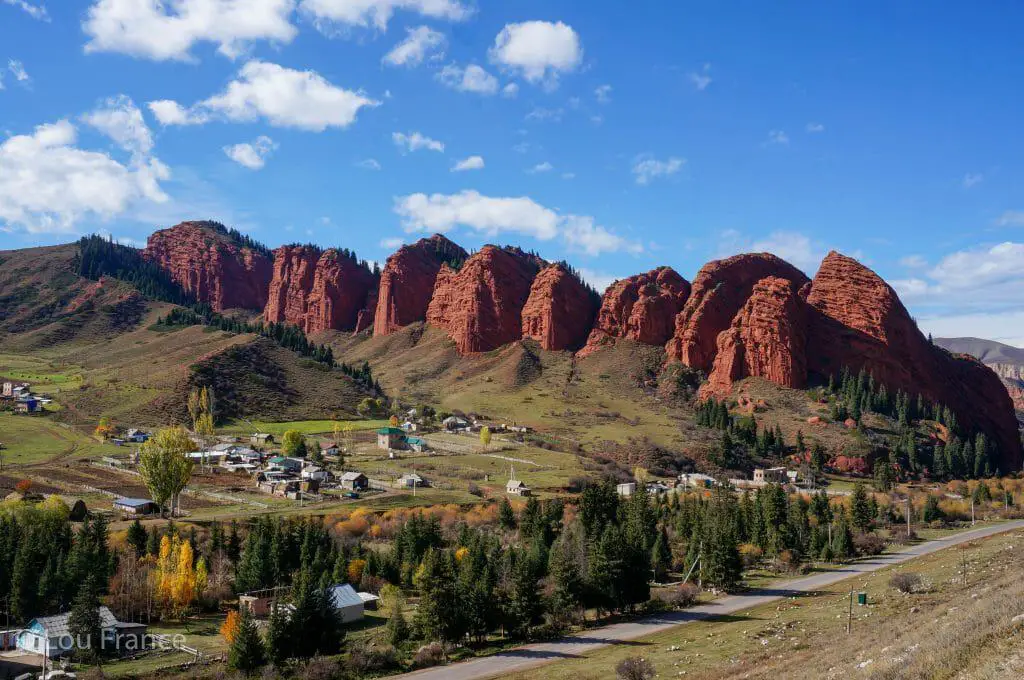
Route Summary
Day 1: Karakol → Djety‑Oguz
- Drive from Karakol to Djety-Oguz gorge
- Walk through spruce forest and cross wooden bridges into “Flower Meadow”
- Overnight in Jeti-Ögüz camp
Day 2: Djety‑Oguz → Telety Basecamp (~3,050 m)
- Trek along Telety River through wooded gorge
- Gradual ascent to alpine meadows below Telety Pass
- Camp at tree line (~3,050 m)
Day 3: Telety Pass (~3,800 m) → Karakol Valley (±2,500 m)
- Early pass crossing (non-technical, ~6–8 hrs)
- Descend into Karakol Gorge, camp near river (~2,500 m)
Day 4: Karakol Gorge → Ala-Kul Lake (~3,600 m)
- Trek via Sirota shelter (~2,800 m), onward to glacial Ala-Kul Lake
- Long ascent (+1,100 m), camp by alpine lake
Day 5: Ala-Kul Lake → Altyn Arashan (~2,400 m)
- Cross Ala-Kul Pass (3,860 m) for sweeping panorama
- Descend to hot springs in Altyn Arashan valley
Day 6: Altyn Arashan → Jeti-Ögüz (via Karakol)
- Hike/jeep back to Karakol or directly to Jeti-Ögüz for closure
- Optionally dip in hot springs or explore valley landmarks
8. The Classic Route (Turkestan Range – Asian Patagonia)
- Duration: 8 days
- Highest Point: 4,300m (Ak-Tubek Pass)
- Distance: – 100km
- Difficulty: Challenging
- Highlights: Ak-Suu Peak, Karavshin Valley, Ak-Tubek Pass, White Rocks
- Best Time: July to early September
Why go: This remote region in the Batken Province of southern Kyrgyzstan is perfect for serious trekkers. Known as “Asian Patagonia” for its rugged granite peaks, dramatic valleys, and wild remoteness, this is Kyrgyzstan’s most intense and visually stunning trekking circuit. The Standard Route takes hikers deep into the heart of the Turkestan Range, through alpine meadows, glacial passes, and iconic locations like Ak-Suu Peak, Karavshin Valley, and Pyramidalniy Peak.
But be warned: this trek is not for beginners. With six high passes, nearly 8,000 meters of elevation gain, and plenty of off-trail navigation, it demands serious stamina and experience—or a reliable guide and support team. Those who take it on are rewarded with scenery few will ever witness.
Route Summary
Day 1: Ozgorush – Buldzhuma Pass – Camp 1 (~2,700 m)
- Gradual ascent through walnut and pistachio forests
- Cross Buldzhuma Pass and descend into a shepherd-inhabited valley
Day 2: Camp 1 – Dahalgytshy Pass – Scenic Campsite (~3,200 m)
- Hike through the dramatic Ak-Tash Gorge and the White Rocks
- Cross Dahalgytshy and a second unnamed pass to reach a wildflower-covered alpine campsite
Day 3: Scenic Campsite – Kara-Suu Pass – Karavshin Valley (~2,800 m)
- Cross Kosh-Moinok and Kara-Suu Passes
- Descend into the vast Karavshin Valley surrounded by granite towers
Day 4: Day hike to Asan & Usan Peaks (optional)
- Explore glacial cirques and view the Yellow Wall, Asan, and Usan Peaks
- Return to Karavshin camp
Day 5: Karavshin – Kara-Suu Pass (return) – Orto-Chashma (~2,900 m)
- Retrace the route over Kara-Suu and Kosh-Moinok
- Camp at the base of Ak-Tubek Pass
Day 6: Orto-Chashma – Ak-Tubek Pass – Ak-Suu Valley (~2,800 m)
- Cross the trek’s highest pass (4,300 m) with stunning views of Ak-Suu Peak
- Descend to a green riverside campsite
Day 7: Day hike to Ak-Suu Peak (optional)
- Hike to the glacier base of Ak-Suu’s 2,000-meter rock face
- Return to Ak-Suu camp
Day 8: Ak-Suu Valley – Ozgorush
- Long descent through juniper forests and alpine meadows
- End at guesthouse or village stay in Ozgorush
Logistics
- Permits: Yes (border zone)
- Guides: Yes, highly recommended —this area is very remote and rarely visited by foreigners
- Camping: Fully self-supported unless using a tour
- Best for: Experienced hikers or those with support teams
Planning Tips for Kyrgyzstan Hikes
Do You Need a Guide?
- Most (not all) treks can be done self-guided if you have a GPS or map and experience, but hiring a local guide adds cultural insight and safety
- Local guides or pack horses can be arranged in most towns (Karakol, Jyrgalan, Kochkor)
- Consider booking through CBT Kyrgyzstan or local community tourism offices
Accommodation on Treks
- Yurts: Common in summer; book through CBT or ask locals on the trail
- Camping: Free and widely allowed—bring your own gear
- Guesthouses: Available in trailhead towns (Karakol, Kochkor, Jyrgalan, etc.)
Maps & Navigation
- Use Maps.me, Gaia GPS, or Komoot with offline GPX tracks
- Trails are often unmarked—GPS navigation is essential
Permits
- No permits needed for most hikes
- Exceptions: Border areas (like Enilchek or near China/Tajikistan borders) may require permits—ask locally or check with CBT
Packing Essentials
- Warm layers and rain gear—even in summer
- Water purification and/or a filtering water bottle (streams are everywhere)
- Tent, sleeping bag (rated to 0°C or lower), mat if camping
- Trekking poles (especially for descents and river crossings)
- Hiking food/snacks (few resupply points on trail)
- Sunscreen, lip balm, sunglasses
- Offline map + power bank
For more detail about the hiking gear I recommend, take a look at this post.
Get 15% off WTG!
Filtering water bottles are perfect for hiking since you can use them for safely refilling in streams and rivers. I’ve secured a deal for all readers of this website with a company that make the perfect filtering water bottles, Water-to-go. Simply use code WWG15 at checkout to get a 15% discount off all Water-to-go bottles and filters.
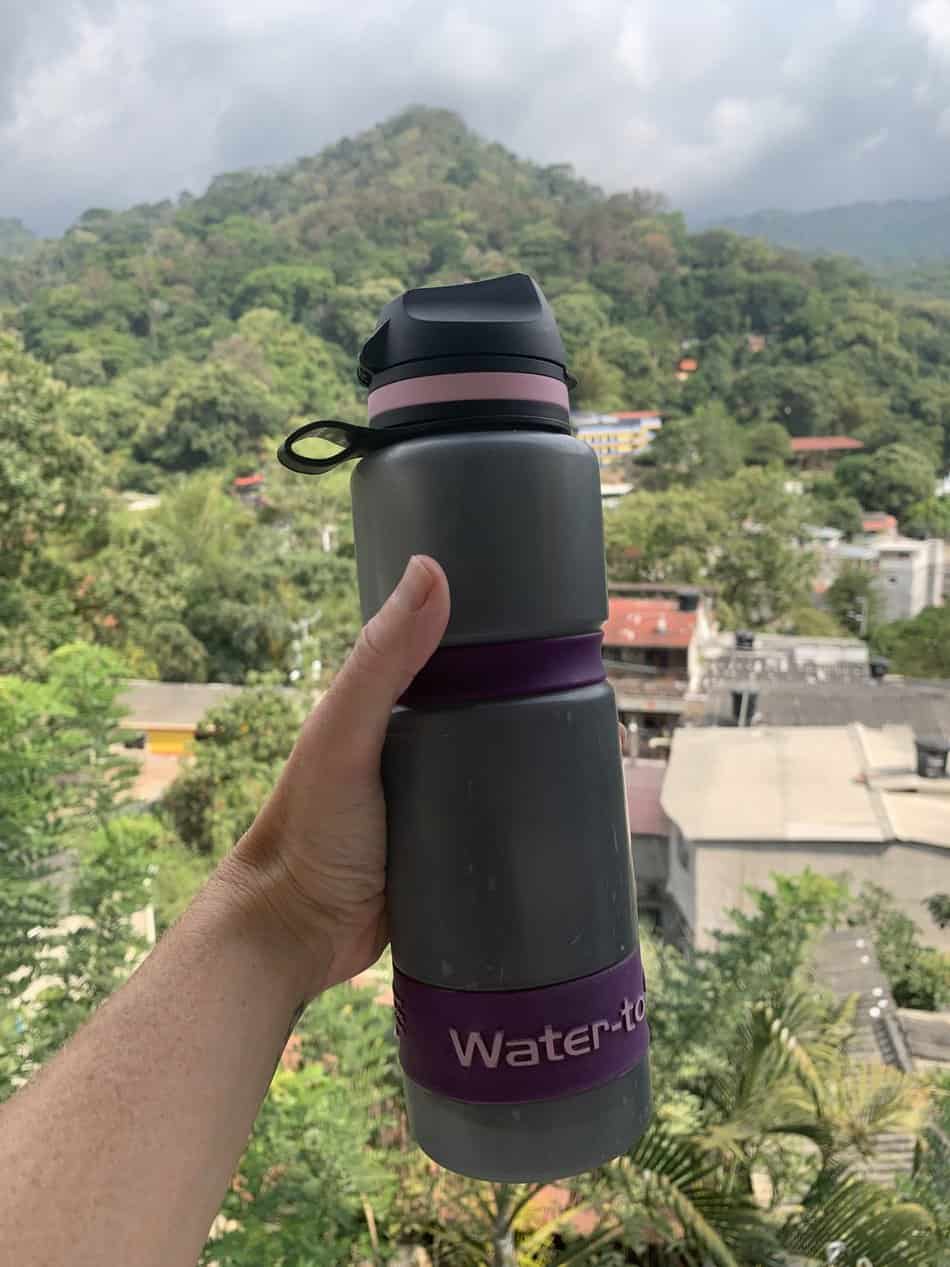
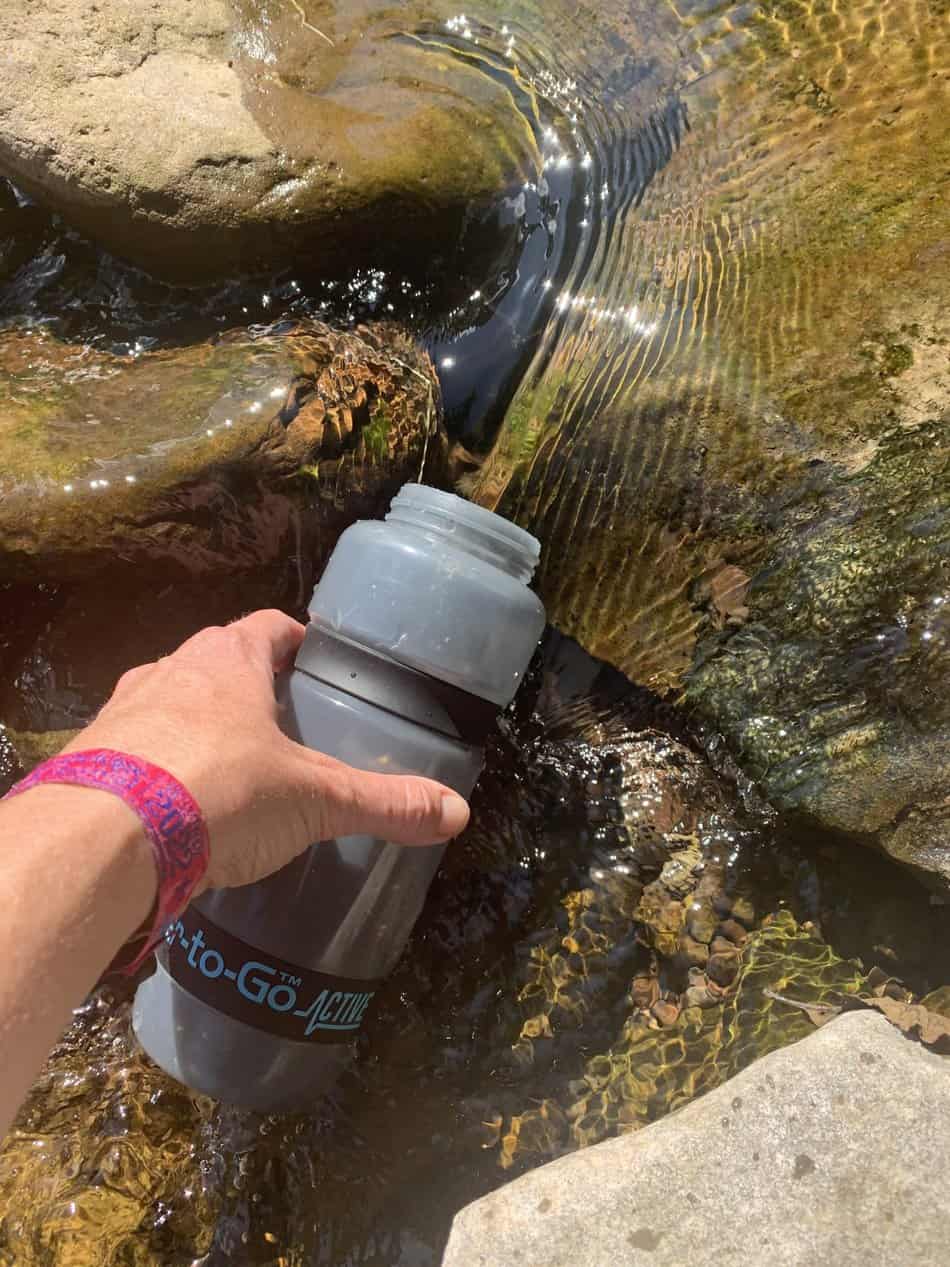
Why Kyrgyzstan for Hiking?
- Jaw-dropping scenery without the crowds of Nepal or the Alps
- Cultural immersion—stay in yurts and experience nomadic life
- Affordability—trekking and transport are budget-friendly
- Freedom—you can camp almost anywhere
- Untapped adventure—many trails are still wild and unspoiled
Don’t Forget Your Travel Insurance!
For the best deals on travel insurance, check out Safety Wing.
Sample Trekking Hubs & Base Towns
| Town | Nearby Hikes |
|---|---|
| Karakol | Ala-Kul, Altyn Arashan, Terskey Alatau |
| Jyrgalan | Boz-Uchuk Lakes, Turnali Kol Loop |
| Kochkor | Kol-Ukok, Song-Kol, Kilemche Valley |
| Sary-Mogol | Lenin Peak, Alay Range treks |
Final Thoughts on Kyrgyzstan Treks
Kyrgyzstan is one of the last frontiers for raw, untouched trekking. Whether you’re hiking to turquoise lakes, sleeping in yurts under a sky full of stars, or tackling remote alpine passes, the country delivers unforgettable adventure.
If you’re looking for trails less traveled and landscapes that stir the soul, Kyrgyzstan should be high on your trekking bucket list.
